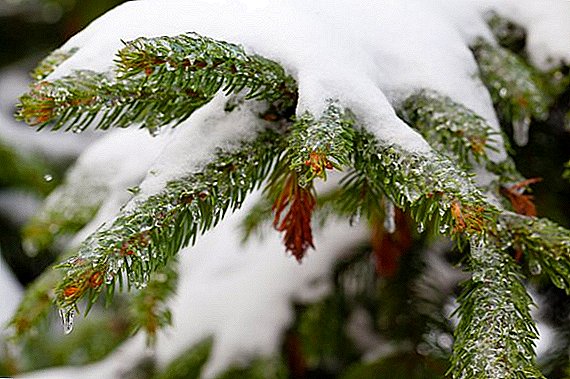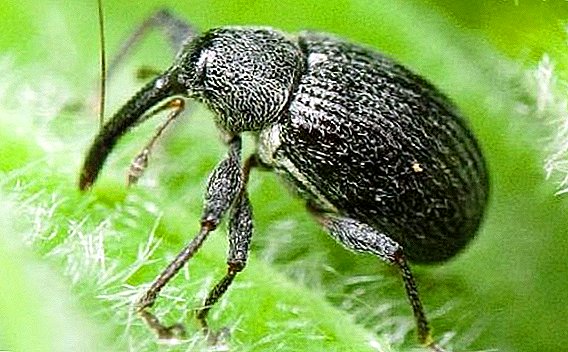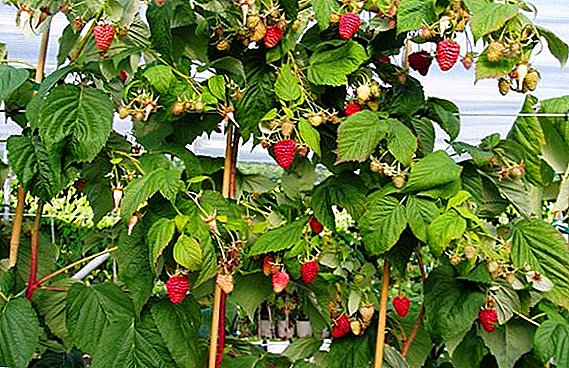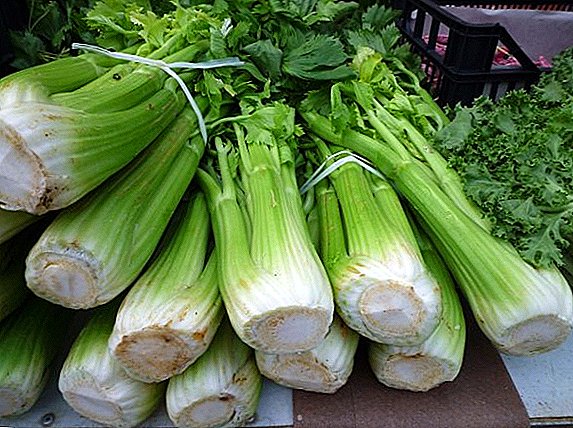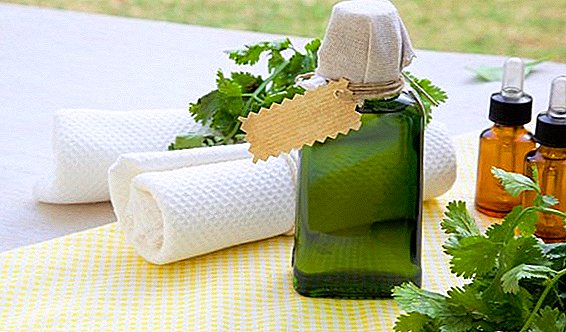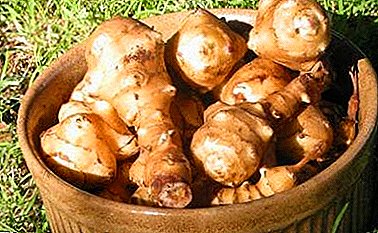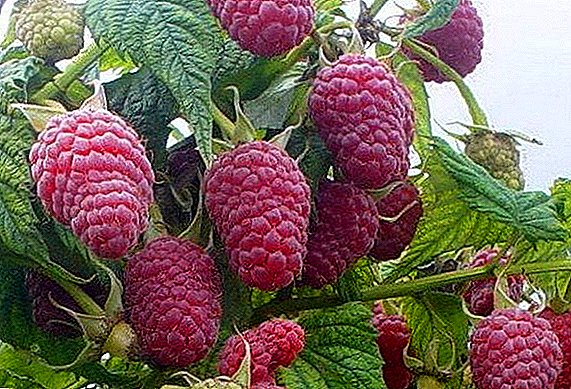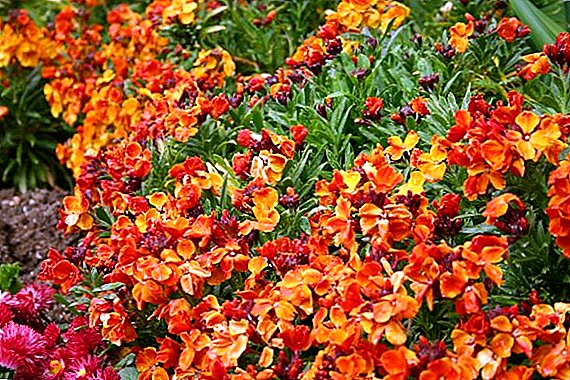 For decorating their gardens, flower growers use a wide variety of flowers. Flowers are annual and perennial, planted in the form of bulbs, seeds and seedlings. For those gardeners who love diversity and want to get from their flowers not only external beauty, but also a wonderful fragrance, a flower of the Lakthiol genus, also known as yellowcone, wallflower and heyranthus, will be a good choice. This plant has been undeservedly forgotten. This article will discuss the popular varieties of lacfioli, its use in design and medicine, the principles of cultivation at home and the basics of preventing diseases of this flower.
For decorating their gardens, flower growers use a wide variety of flowers. Flowers are annual and perennial, planted in the form of bulbs, seeds and seedlings. For those gardeners who love diversity and want to get from their flowers not only external beauty, but also a wonderful fragrance, a flower of the Lakthiol genus, also known as yellowcone, wallflower and heyranthus, will be a good choice. This plant has been undeservedly forgotten. This article will discuss the popular varieties of lacfioli, its use in design and medicine, the principles of cultivation at home and the basics of preventing diseases of this flower.
Botanical description
This plant belongs to the Cabbage family and is very close to matthiols. It constantly crosses with mattiols because it is mistakenly planted by florist under the guise of the latter. There are many varieties of this plant, most of them differ in color of petals, and only a few - in the size of leaves.  Represent a small shrub and shrub with large clusters of inflorescences. There are also single-ended forms without branches. Opening, the petals acquire different shades of yellow, brown, orange and dark purple flowers. There are motley colors. Petals are smooth and terry. They fade away, and in place of the receptacle an elongated fruit is formed in the form of a slightly compressed pod.
Represent a small shrub and shrub with large clusters of inflorescences. There are also single-ended forms without branches. Opening, the petals acquire different shades of yellow, brown, orange and dark purple flowers. There are motley colors. Petals are smooth and terry. They fade away, and in place of the receptacle an elongated fruit is formed in the form of a slightly compressed pod.
Important! If heirantus begins to fade, carefully cut off the faded buds with a garden shears or scissors so that they do not interfere with the development and bloom of new buds in the brush.
Distribution and habitat
Best of all, this culture takes root on fertile, limestone-rich soils, so its natural range is small — the islands in the Aegean Sea and the southern part of Greece. In the wild, the number of varieties of lacfoli does not exceed four units. 
Popular varieties Lakfioli
The first three varieties are natural, the rest were bred as a result of hybridization:
- "Alpine". Small shrub with uniform yellow inflorescences. The brushes are simple, bloom in early spring and stand firmly return frost;
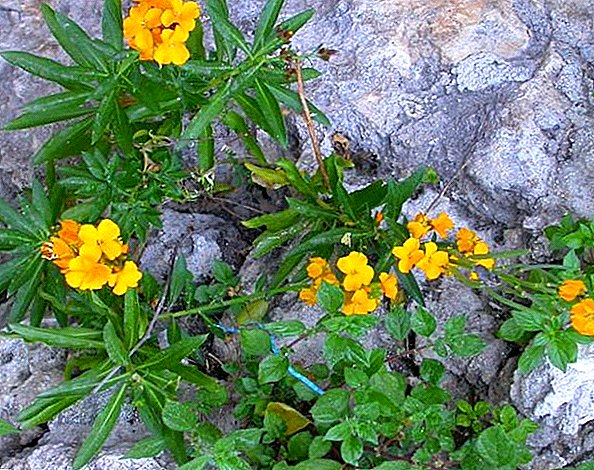
- Cherie. A larger shrub with a height of 60 centimeters. The color is crimson-golden, rarely found rich purple. Inflorescences are large with a pronounced refreshing smell. Requires abundant watering in the hot season;
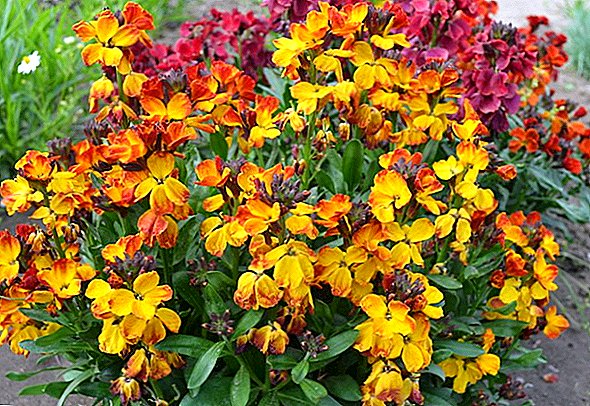
- "Changeable". The largest variety, reaching a height of 80 centimeters. Inflorescences are pale yellow. The older the plant, the darker the petals, becoming almost brown by the end of the season. Light-requiring, drought-resistant culture, likes loose moist soils;
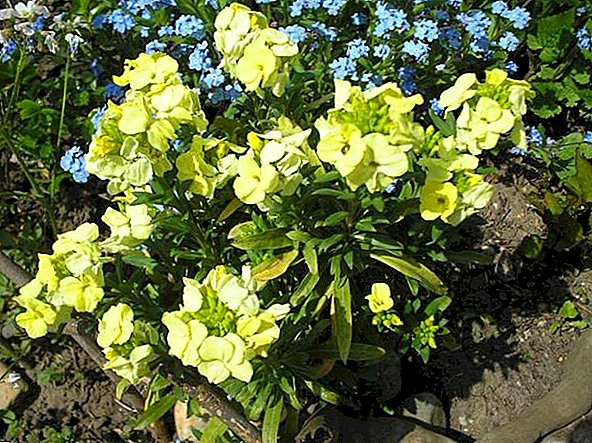
- "Bedder". Dwarf hybrid, more than 30 centimeters does not grow. Differs in simple colors of a red-orange motley color. Sensitive to frost, so it is recommended to plant it in open ground in late April or early May;
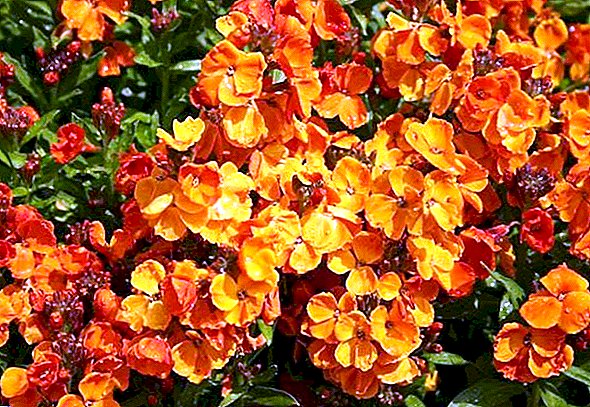
- "The Snow Queen". Name received for its resistance to low temperatures. Blooms seven weeks after germination. Favorably differs from other varieties in that it grows in open ground from seeds, and not from seedlings. It blooms until late autumn, in warm climatic zones it throws inflorescences the following year.
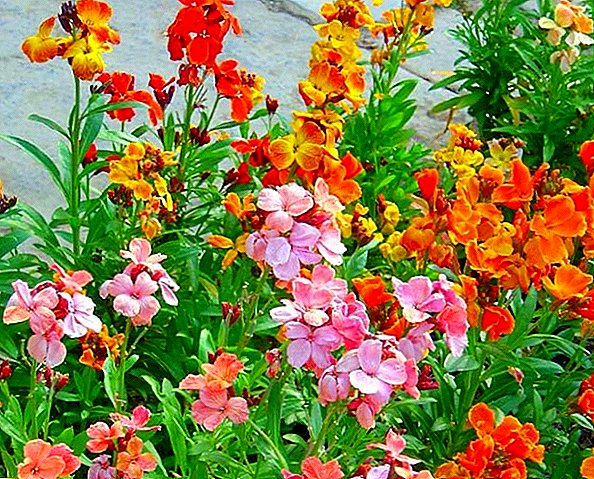
Did you know? For the first time, the lacfiole began to be grown as a cultivated plant in the 16th century. This flower became popular thanks to the French perfume, which began to be produced using its essence. Lacfiol quickly spread across Europe as a bright and elegant ornamental plant, and then appeared in the Slavic countries.
Use in landscape design
It is widely used in botanical gardens and city parks because of its decoration. Planted in mixborders, curb compositions, alpine slides, near artificial ponds and on decorative slopes among natural stones. It goes well with undersized tulips and poppies, as it needs the same soil as these crops. Planted with night violet and iberis. In a freshly cut form it looks great in bouquets. It is unpretentious if it falls into a well-lit place without drafts and with sufficiently alkaline soil. 
Medical applications
This is a poorly cultured culture, so it is not used in official medicine. There are contraindications to its use. You can not use drugs on its basis for children under fourteen years of age, pregnant and lactating women, people with allergies to this plant. The most effective lacquiol reduces gout pain and rheumatic pains, has a general analgesic effect, relieves seizures.
It is recommended to use to stimulate menstruation and as a laxative. Regular use of drugs based on this culture reduces the risk of stroke and paralysis.
Medicinal properties are mainly dried inflorescences. Less commonly, seeds and leaves are used for medicinal purposes. Harvested raw materials in dry sunny weather, dried naturally in the open air. This plant owes its healing properties to its essential oils, flavonoids and cardiac glycosides. These substances save from problems with the cardiovascular system, raise the pain threshold and have an antispasmodic effect.
In addition to lacfiol, in the diseases of the cardiovascular system, the following plants are also used: carrots, radishes, calendula, hawthorn (glod), silver fox, basil, eggplants, aconite, filberts, gumi (multi-flowered mulberry) and yasenets (non-burning bush).

Perfume Application
The aroma of this flower is called the heart of perfume compositions. It is similar to the smell of lilac, only more saturated, sweet and at the same time fresh. This smell enlivens fruit and powder perfume compositions, adds warm notes to citrus and water aromas. It has been used in perfumery for more than five centuries. For obtaining aromatic oil in the course are flowers lakfioli ordinary.
Important! If you plan to propagate flowers seedlings, start sowing seeds in late February or early March, in order to have time before the first warm days, suitable for planting. The seedlings, which were planted in April-May, will throw out inflorescences only in the second year of growth.
Growing at home
This culture, with proper maintenance, will feel comfortable both in pots and in the open field. 
Conditions of detention
If you plan to grow these flowers in pots, you can sow them into the soil at any time of the year. In the autumn-winter period, be sure to spend additional lighting with fluorescent lamps, otherwise the stems will stretch out and become pale. This is a very light and heat-loving plant. It should be placed on warm sunny window sills when kept in pots or planted on land that is well lit and protected from drafts. Frost these flowers can not tolerate. Before planting seedlings in the ground, make sure that cooling is no longer planned.
It was young, carnation, aster, thyme, bell, jascolk, stonecrop, edelweiss, sage (salvia), geykher and yarrow, as well as lacfiol, light-loving plants that will feel fine on the beds under the constant influence of direct sunlight.
Soil and fertilizer
Under natural conditions, cheirantus grows on alkaline loose soils. To provide him with a comfortable environment, pick up a non-acidic soil, do not tamp it after planting. For potted plants, collect clay, so that the soil is drained and the water does not stagnate in it. Organic fertilizer apply for a half to two weeks before planting. During this time, they evenly saturate the soil and do not harm the plants. The mineral mixture should be applied to the soil every month during the entire flowering period, increasing the top dressing during the period of active growth. 
We advise you to consider the importance of soil acidity for plants, how to determine the acidity of the soil and how to deoxidize the soil.
Watering and moisture
Excess moisture, as well as shading, this flower does not tolerate. It is much more comfortable for him to be in dry, loose soil, so water the jaundice as the soil dries out. For plants in pots, you can practice bottom watering in the pan. Bushes in open ground suitable top watering under the root of the neck. Do not spray the leaves with water and do not flood the plant, otherwise its root system will rot, and the stems will be covered with white rust. 
Familiarize yourself with the advantages of using drip irrigation, as well as learn how to organize a system of drip irrigation at the dacha.
Breeding
The wallflower propagates exclusively with seeds, but seedlings can be grown from them if you plan to get flowers in early summer. Start seedling early in March. The seeds of these flowers are very small. Each gram has an average of five hundred seeds, so before sowing they need to be thoroughly mixed with sand.
Take a shallow container, fill it with alkaline soil mixed with fertilizer, and sow the seeds. Cover them with sand or soil, sprinkle with water from a spray bottle and cover the container with cling film. Leave it in a warm, well-lit place. Lift a film once a day to wind the soil. As soon as separate shoots appear on the surface, spread them out in separate containers. Peat cups are best for this purpose. Grow seedlings using fluorescent lamps. Strengthened shoots can be transferred to the open ground six weeks after they have grown.
Important! Heyranthus seeds contain toxic glycosides, therefore it is recommended to work with them only in gloves. In people with sensitive skin, these seeds can cause irritation, and in those who suffer from individual intolerance - to provoke an allergic reaction.
 If you plan to sow lacfiol immediately in open ground, do it at the end of May. Loosen the soil and apply organic fertilizer a week before sowing the seeds. Flowers planted in such a way will grow up to the beginning of autumn and at sufficiently high temperatures will give late flowering inflorescences. The next bloom should be expected in late May or early April.
If you plan to sow lacfiol immediately in open ground, do it at the end of May. Loosen the soil and apply organic fertilizer a week before sowing the seeds. Flowers planted in such a way will grow up to the beginning of autumn and at sufficiently high temperatures will give late flowering inflorescences. The next bloom should be expected in late May or early April.
To enrich the soil and nourish the plants, use organic fertilizers: straw, pigeon droppings, Florex granulated chicken droppings, bone meal, fish meal, whey, potato peel, compost, eggshell, banana peel fertilizer and tobacco dust.
Relation to temperature
Wintering of the wallflower can in the soil, provided that the temperature does not fall below -17 degrees. In regions with warm climates and mild winters, this plant does not even need shelter. If the soil you have freezes more than a half meter, take care of a dense shelter for these plants. In regions with a harsh climate, a two-year wallflower should be transferred to pots in early October and planted back into the soil in early April. Moderate drought and high temperatures are favorable conditions for the wallflower. 
Pruning
These shrubs do not need special crown formation. It is advisable to arrest the growth point on a young plant after the appearance of the fifth full leaf. It is also necessary to regularly remove dead shoots and withered buds with sharp scissors. Do not tear them, so as not to injure healthy stems.
Did you know? Lakfiol and levkoy are so similar to each other that often one is planted under the guise of others. So, in St. Petersburg, the beginning of the 20s of the last century, there was a real boom for lacfiol. It bloomed on almost every window-sill, its seeds were distributed to friends and acquaintances as the seeds of "levkoev of unprecedented beauty."
Possible difficulties in growing
Shadow, excess moisture and cold are the main enemies of the lacfoli. Do not allow the sunlight for this flower to obscure other plants. A shrub that lacks light will be stretched out, pale and may not bloom at all. Excessive watering leads to rotting of the root collar and weakening of the root system. As for the cold, it harms both the leaves and the petals. 
Important! Excess nitrogen fertilizer in the soil leads to powdery mildew and white rust. To avoid this, apply mineral fertilizers to the soil no more than once a month. Adhere to the proportions indicated in the instructions.
Pests, diseases and prevention
The wallflower belongs to the Cabbage family, so the pests are appropriate. Do not grow this flower in the soil in which the cabbage had previously grown to avoid possible cross contamination. The most common suffering is a wallflower from white rust or white rot. This is a fungal disease, and it appears on over-wetted plants. To avoid rust, water the shrub sparingly and, if necessary, treat it with fungicides or infusion of horsetail.  As for pests, the cruciferous flea most often affects the wallflower. This is a small bright (red-black) insect that can get on your plot or a flower bed from neighboring farms. Special insecticides will be able to cope with the flaws, and they will not allow it to appear on the edges of the flowerbed.
As for pests, the cruciferous flea most often affects the wallflower. This is a small bright (red-black) insect that can get on your plot or a flower bed from neighboring farms. Special insecticides will be able to cope with the flaws, and they will not allow it to appear on the edges of the flowerbed.
Did you know? The great Russian poet Joseph Brodsky mentions Lakfiyol in his poems. His poem "Winter Evening in Yalta" contains lines about wallflower in pots on the windowsill and a marvelous winter season in the Crimea.
Lacfiol is an elegant sun flower. There are many popular varieties of this crop, which were derived from four common species in the wild. They are used in traditional medicine, perfumery and landscape design. Known for their love of heat and the sun, these flowers take root well in alkaline soils. They can be propagated by seedlings and seeds, kept in pots and open ground. Remember, the natural habitat of Lacfioli is sunny Greece, so provide her with appropriate conditions and she will become a worthy decoration of your home or plot.







